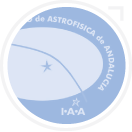Seasonal variation of the HDO/H2O ratio in the atmosphere of Mars at the middle of northern spring and beginning of northern summer
We present the seasonal variation of the HDO/H2O ratio caused by sublimation-condensation processes in a global view of the Martian water cycle. The HDO/H2O ratio was retrieved from ground-based observations using high-dispersion echelle spectroscopy of the Infrared Camera and Spectrograph (IRCS) of the Subaru telescope. Coordinated joint observations were made by the Planetary Fourier Spectrometer (PFS) onboard Mars Express (MEX). The observations were performed during the middle of northern spring (Ls = 52°) and at the beginning of summer (Ls = 96°) in Mars Year 31. The retrieved latitudinal mean HDO/H2O ratios are 4.1 ± 1.4 (Ls = 52°) and 4.4 ± 1.0 (Ls = 96°) times larger than the terrestrial Vienna Standard Mean Ocean Water (VSMOW). The HDO/H2O ratio shows a large seasonal variation at high latitudes. The HDO/H2O ratio significantly increases from 2.4 ± 0.6 wrt VSMOW at Ls = 52° to 5.5 ± 1.1 wrt VSMOW at Ls = 96° over the latitude range between 70°N and 80°N. This can be explained by preferential condensation of HDO vapor during the northern fall, winter, and spring and sublimation of the seasonal polar cap in the northern summer. In addition, we investigated the geographical distribution of the HDO/H2O ratio over low latitudes at the northern spring in the longitudinal range between 220°W and 360°W, including different local times from 10 h to 17 h. We found the HDO/H2O ratio has no significant variation (5.1 ± 1.2 wrt VSMOW) over the entire range. Our observations suggest that the HDO/H2O distribution in the northern spring and summer seasons is mainly controlled by condensation-induced fractionation between the seasonal northern polar cap and the atmosphere.































